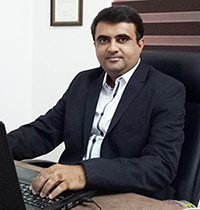Your flash drive can get damaged due to a number of reasons. Virus affected flash drives can be a great pain for the drive itself and the system too. But if you know the right ways of troubleshooting and fixing various issues, you can easily repair the flash drive.
Repair Physical Damage: If there is any physical damage to the flash drive, you should know how to fix it. If you have any doubt regarding the method, you can easily visit http://taskbob.com/ for the clarification.
- Sort the Files According to Importance: You should at first decide whether your files on the thumb drives are less important so that you can take the risk of attempting the data recovery all by yourself. If you find out that your data is very important and cannot be lost at all, then you should seek help from a professional data recovery company. The companies generally possess specially designed hardware kits for repairing the circuit boards. The data recovery prices can range from $20 to $850 depending on the severity of the damage.
- Get Your Tools: If you have decided to risk your files, you may try fixing on your own with the tools like wire cutters, small flathead screwdrivers, soldering iron with solder and flux and magnifying glass. All these tools are necessary only if your thumb drive has a broken connector.
- Remove Casing: With the help of the flathead screwdriver, you can simply remove the outer casing of the flash drive.
- Use Magnifying Glass: For carefully inspecting the solder pads and the circuit boards, you can use the magnifying glass. If you notice that the solder pads are lifted or the circuit board is damaged you may need the guidance of professionals like Taskbob’s desktop repair services. If only the connector is broken, you may proceed to the next step.
- Set Flash Drive: You can connect the flash drive to the connector end facing towards you and the solder pads facing towards the upward direction.
- Use Wire Cutters: The wire cutters can be used to cut one end of the USB cable. If you have a spare USB cable to use, you may use it with a small electrical wire gauge and can create a mini USB cable on your own.
- Set the Solders Into the Pads: The solders must be set properly into the solder pads. They should be arranged properly according to the colors black, green, white and red starting from the left to the right. Instead of the cable, if you have used your own wire, you can solder the wires according to the corresponding pads.
- Plug the USB Cable: You can finally plug the other end of your USB cable in your system and wait for the results. If it gets registered, you can comfortably save your files in the computer. But if it is not recognized by your system, you may consider sending the thumb drive to the professional data recovery company or may think of buying a new one.
Scan The Problems: You can scan the problems by inserting the drive in your computer. You can select the removable disk icon from “My Computer” option and can select the “Check” button from the “Tools” tab. You will find options for automatic scanning and fixing. You should check the boxes and start the scanning process. You can close the dialog box after the entire scan is completed.
Sometimes, it may also happen that the USB port in your system is not working. Then, you should remove the drive, reboot your system and then check again. If the problem still persists, you may check the drive in another system.
Author Bio: John Moody is a well-known software engineer. In this article, he is sharing some tips for repairing the defective flash drives.

